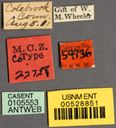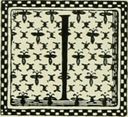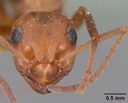Formica difficilis
Classification
- Phylum: Arthropoda
- Subphylum: Hexapoda
- Class: Insecta
- Order: Hymenoptera
- Superfamily: Formicoidea
- Family: Formicidae
- Subfamily: Formicinae
- Tribe: Formicini
- Genus: Formica
- Species: difficilis
Pronunciation
How to pronounce Formica difficilis: //fɔrˈmiːkə dɪˈfɪsɪlɪs//
These audio files are automatically generated. While they are not always 100% accurate, they are a good starting point.
Images






Summary
Formica difficilis is a small ant species in the family Formicidae, characterized by its unique physical features and behaviors. It engages in mutualistic relationships with aphids and relies on invasions for colony founding.
Physical Characteristics
Workers 3.5-5.5 mm, queens 5.5 mm. Workers recognized by sparse occurrence of short, spatulate or distally flattened and broadened hairs on pronotum and vertex of head; head slightly shinier than the mesosoma. Queens uniform brownish yellow except for alary sclerites, shiny, and no larger than the largest workers.
Identification Tips
Look for workers with short, spatulate or distally flattened hairs on the pronotum and vertex. The head will appear slightly shinier than the rest of the body.
Habitat
Native loamy or sandy grasslands, old fields, lightly grazed pasture, and barrens.
Distribution
Eastern US, roughly co-extensive with the usual temporary host (F. incerta).
Diet
Avidly tends aphids and membracids, visits extrafloral nectaries on prairie plants, and preys on small, soft-bodied invertebrates.
Life Cycle
Colony foundation is by invasion of small queens into colonies of F. incerta or by re-entering an established colony of its own species, followed by later colony fission.
Reproduction
Small queens invade colonies of F. incerta during colony foundation or can re-enter an established colony of their own species.
Collecting Methods
- Attracted to sweet baits
- Attracted to meat baits
Evolution
Part of the Formica microgyna group, known for small-queened species within the greater rufa group.
Similar Taxa
- F. incerta
Tags
- ant
- Formica
- Hymenoptera
- Formicidae
- insect